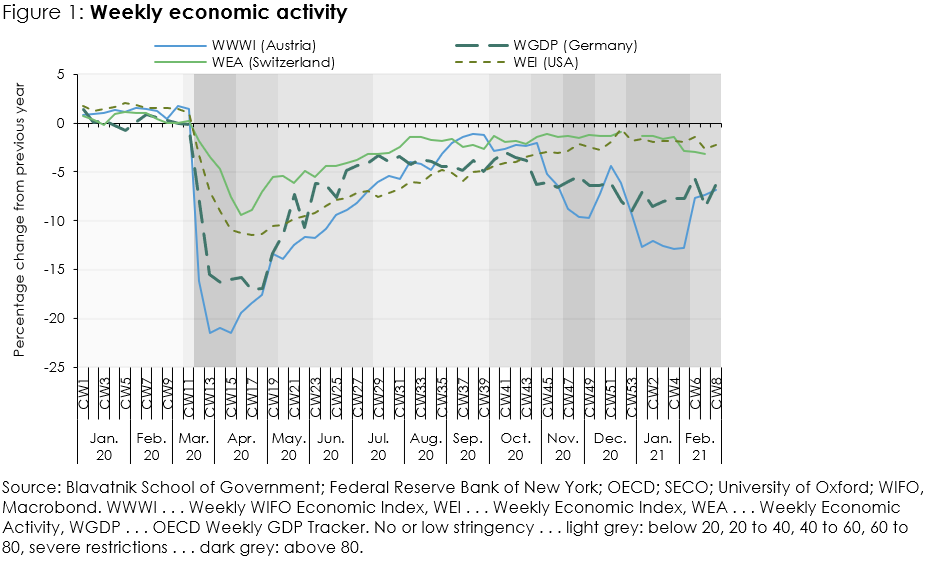
Economic Activity in Austria Remains Strongly Impaired
"As in many other countries, economic activity in Austria at the beginning of 2021 was significantly below the level of the previous year. While industrial production is benefiting from the global economic recovery, economic activity in trade and other services continues to be severely hampered by regulatory restrictions", said Stefan Ederer, author of the latest WIFO business cycle report.
The global economic recovery continues, but slowed down at the end of 2020, with world trade losing some momentum in the fourth quarter. In the USA, fourth quarter GDP was only 1 percent higher than in the previous quarter. In the euro area, economic output actually declined at the end of the year. With the exception of China, economic activity in most major economies was still well below its pre-crisis level at the end of 2020. This situation is unlikely to have changed in the first few weeks of the current year. However, some indicators point to a continuation of the recovery: the RWI container throughput index, an indicator of global trade, rose again in January and raw material prices continued to increase in February. However, consumer confidence remained subdued in most industrialised countries until recently. In addition, the situation on the labour markets remains significantly less favourable than before the outbreak of the COVID-19 pandemic.
In Austria, the economy contracted significantly in the fourth quarter (–2.7 percent compared with the previous quarter). GDP was thus 5.7 percent lower than a year earlier. In particular, private consumption and exports of goods and services had not yet recovered from the crisis. In the areas of trade, transport, accommodation and food service activities, and other services, value added fell particularly sharply year-on-year.
Economic activity remained low at the beginning of 2021. Regulatory measures had again been taken to contain COVID-19 infections as of 26 December 2020, resulting in a renewed decline in economic output. According to the Weekly WIFO Economic Index (WWWI), GDP in the first five weeks of 2021 was around 12½ percent lower than in the same period of the previous year. Following the partial lifting of restrictions on 8 February the indicator showed a noticeable improvement; however, economic activity in the fourth week of February was still around 7 percent lower than a year earlier.
According to the WIFO Business Cycle Survey of February 2021, the economic assessments of Austrian companies also remain predominantly pessimistic. Sentiment is extremely subdued, especially in the services sector and in consumer goods production, while the capital goods sector is benefitting from the global economic recovery. In the construction industry, the majority of assessments have been optimistic again since summer 2020; the positive trend continued at the beginning of 2021.
Inflation slowed to +0.8 percent year-on-year in January, well below the European Central Bank's target of 2 percent. The main price driver was housing, water and energy, whereas prices for food and non-alcoholic beverages as well as for gasoline and diesel declined. The Austrian labour market continues to suffer severely from the consequences of the COVID-19 pandemic. The seasonally adjusted unemployment rate according to the national definition was 9.4 percent in February.


